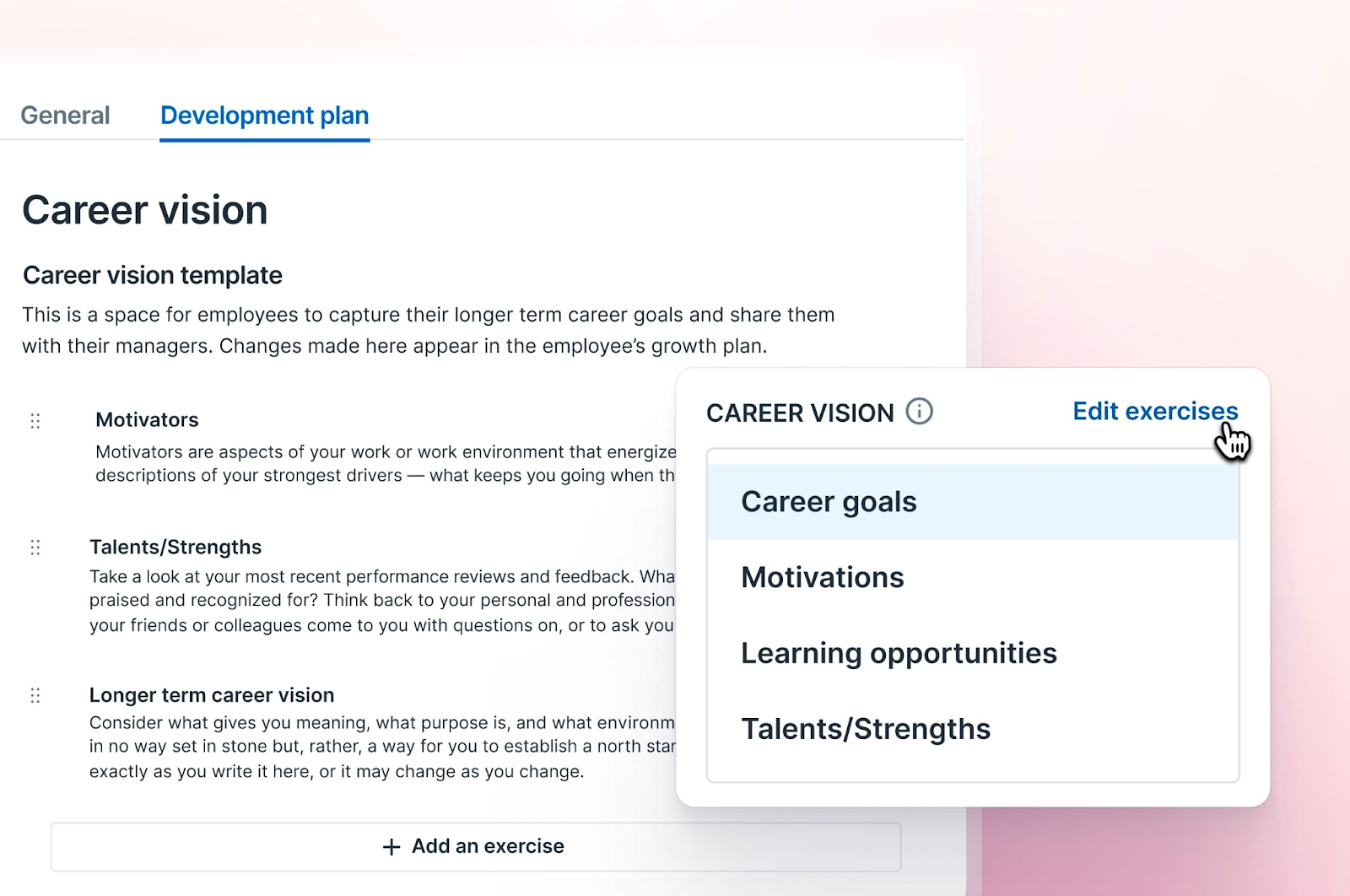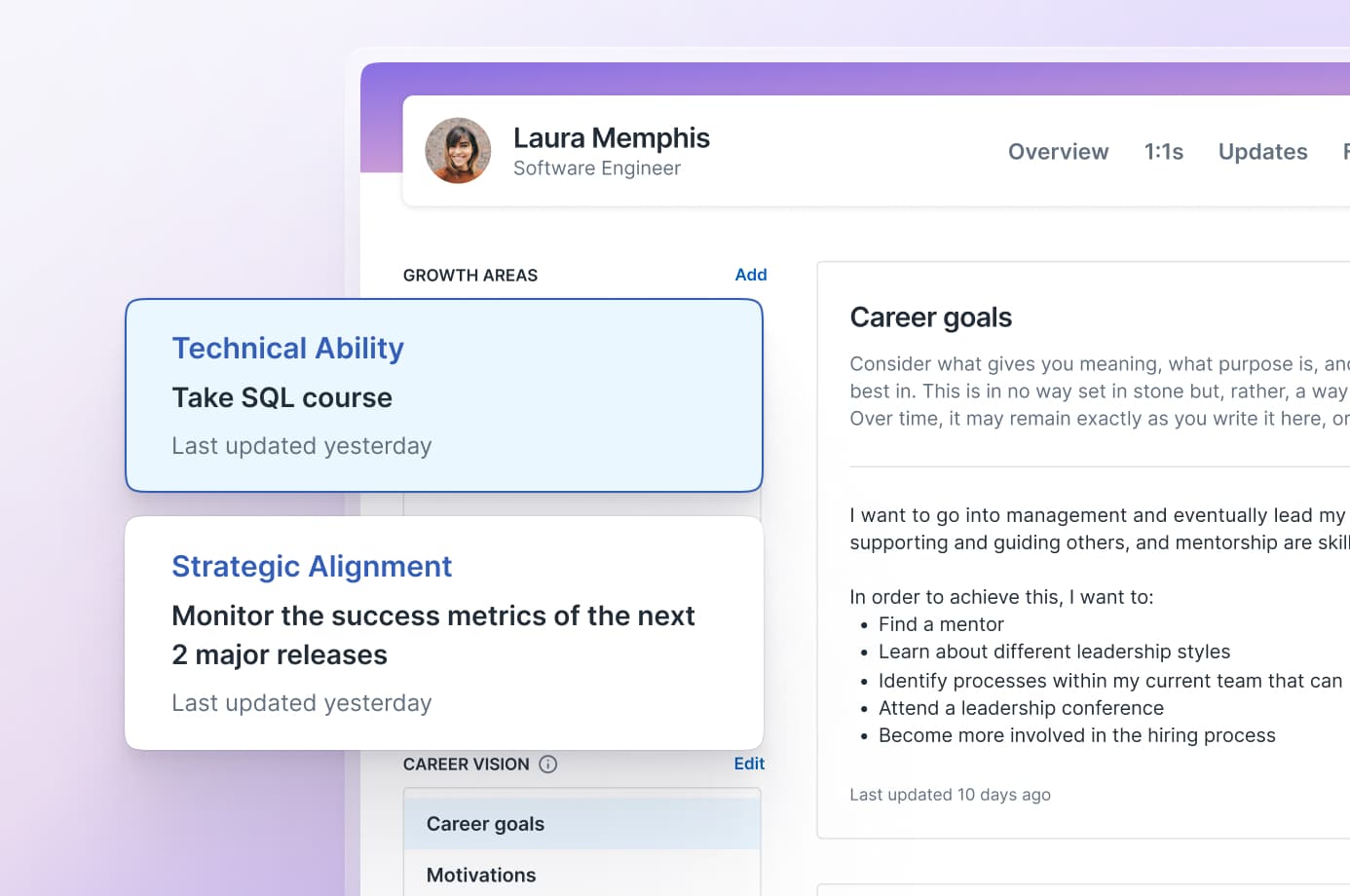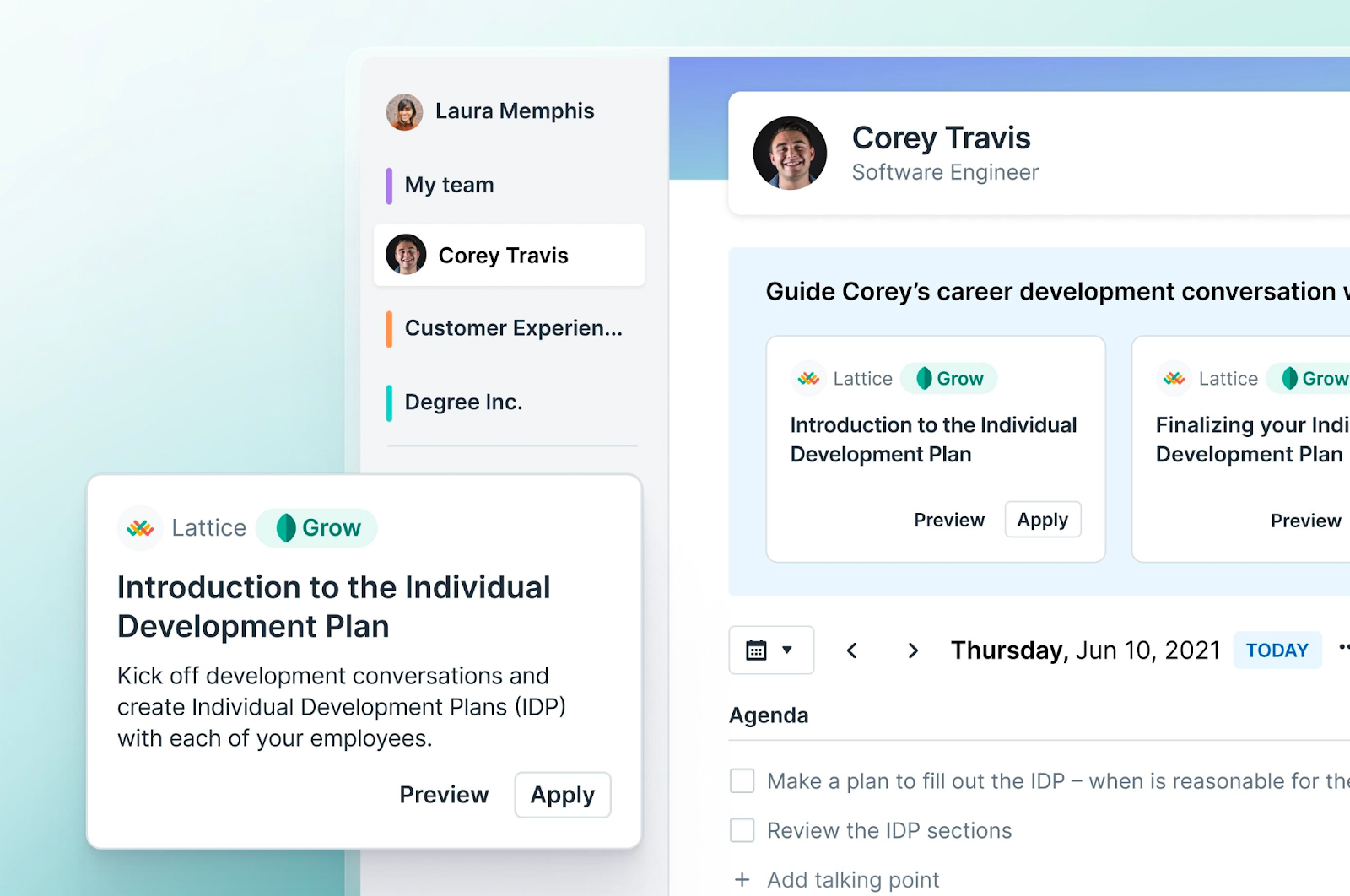When it comes to hiring and retaining employees — especially in a competitive labor market — firms that offer a robust employee development program can have a major advantage. It’s a win-win: Ambitious and engaged employees want opportunities to stretch their skills, and companies that can provide these opportunities reap the rewards in the form of dedicated, innovative workers.
While HR professionals have a number of options when it comes to bringing development programs to life, individual development plans (IDPs) have become some of the most ubiquitous. The co-written plans, shaped by managers and employees together, let employees define their career goals and outline the steps they’d need to take to achieve them. These plans can be a powerful tool, and they can set the stage for breakthrough growth for the employee, both in their role and their career. But at many organizations, the IDP process doesn’t always live up to its potential.
What Is an Individual Development Plan?
Individual development plans are documents created collaboratively between employees and their managers or supervisors that define the employee’s short- and long-term career goals. According to the Society for Human Resource Management (SHRM), IDPs also typically lay out the support and educational opportunities the employee would need to achieve those goals, like projects to lead, classes and seminars to enroll in, and opportunities to seek out.
Notably, they’re not evaluations or performance plans, although many firms that use IDPs do so in part because of the performance benefits they see when their employees feel supported and motivated. They’re a well-regarded tool in Human Resource management (for example, many federal agencies require them), and can be a powerful tool for the development of both employees and companies alike.
IDPs are a key component of most companies’ learning and development (L&D) strategy, especially because they are a very affordable way to invest in employee growth. But while IDPs are a ubiquitous growth planning tool, they can be antiquated. They are often static documents that aren’t updated regularly or integrated into the employee’s daily flow of work. This lack of scalability and engagement can frustrate People and L&D leaders."
Individual development plans are meant to grow and evolve with the employee, with new goals and opportunities added as the employee grows their career and competencies. IDPs should be revisited regularly for optimal benefit.
Characteristics of Successful IDPs
While every individual development plan should be unique to the objectives and opportunities for each employee, Lattice Advisory Services outlines five key components of an effective IDP: strengths, development opportunities, long-term career vision, short-term career plan, and immediate growth areas.

It’s also critical that individual development plans establish a metric, or measurable way that the employee can know they’ve improved or succeeded. Specificity is key: If there are new skills an employee wants to develop or that are required to reach a target milestone, they should be spelled out. If there is a particular training that will be a prerequisite for achieving a benchmark, or a specific job shadowing opportunity that would be valuable, it should be included.
But IDPs shouldn’t be a rigid catalog of boxes to tick either. While the intention is to set goals, the plan should be flexible enough to allow the employee to grow and develop their career path as they learn.
How IDPs Support Employees
Working through the IDP process of self-assessment offers employees a chance to both reflect on their skillset and current job performance, and help them envision what career advancement might look like for them personally — and what action steps they’ll need to get there. And for workers whose previous interactions with supervisors have been limited to feedback on their current job performance, the actual act of career planning and setting professional goals can be a huge plus.

“IDPs are more valuable when the employee and their manager have a high degree of trust between them,” said Bonnie Davis, founding partner and consultant at Denver, CO-based coaching and consulting firm HuWork. “[They can] enable an open dialogue between [the] manager and [their] direct reports about how the person can be their best, rather than focus on what they are ‘doing wrong,’ and provide a roadmap with a manageable but meaningful mix of on-the-job experiences, formal learning, and coaching and mentoring.”
Experts agreed that employee development plans can be illuminating for both the employee and the manager — and going through the self-assessment and career planning process can help employees envision professional growth at their firm.
“Individual development plans show employees that [their supervisors] are invested in their long-term growth,” said Davis Nguyen, founder of management consulting training program My Consulting Offer.
How Lattice Brings IDPs to Life
Lattice has long offered a robust solution for employee development with its Growth Plans feature, which enables employees and managers to continuously track progress on short-term goals. With the launch of the IDP feature, managers can go one step further in supporting long-term employee development.

When used in conjunction, growth plans and IDPs have the power to turn managers into career coaches equipped with the tools and framework needed to drive fruitful development conversations.
Schedule a demo to learn more about how Lattice’s new Individual Development Plan feature takes employee development to the next level.




.jpg)


